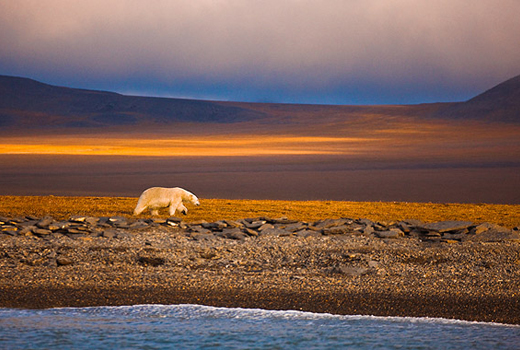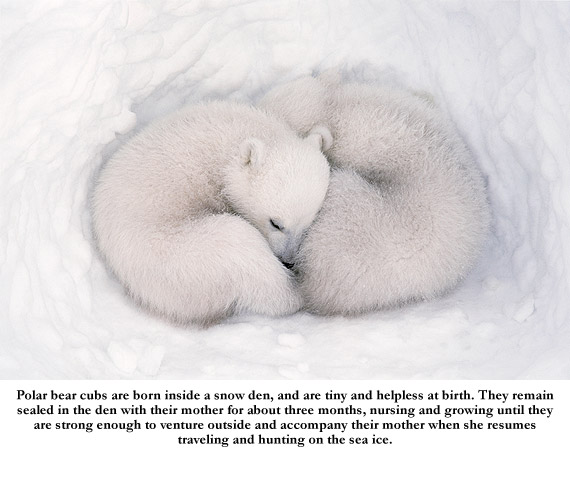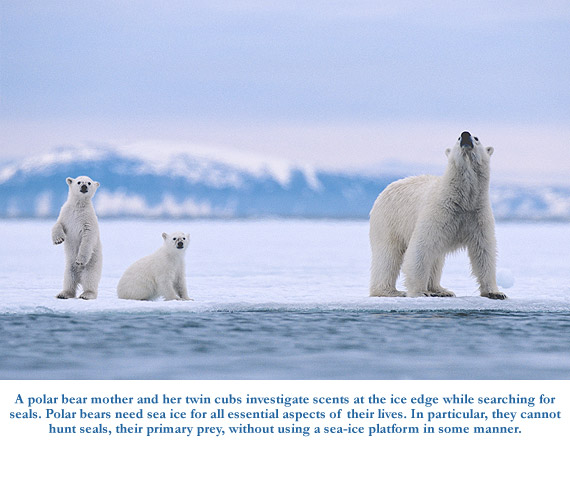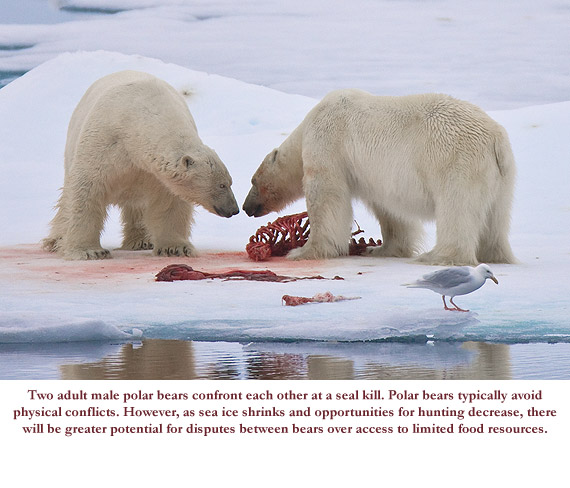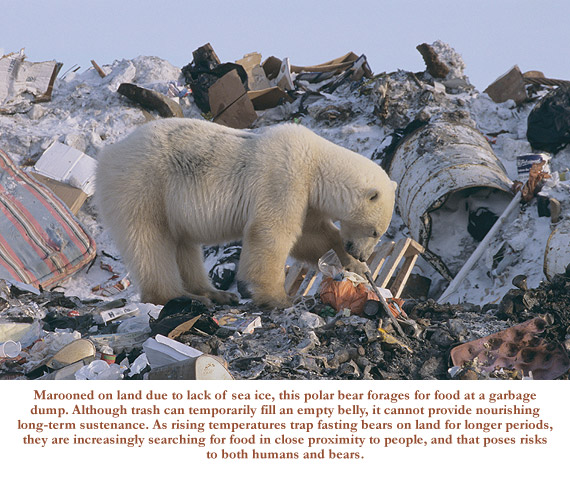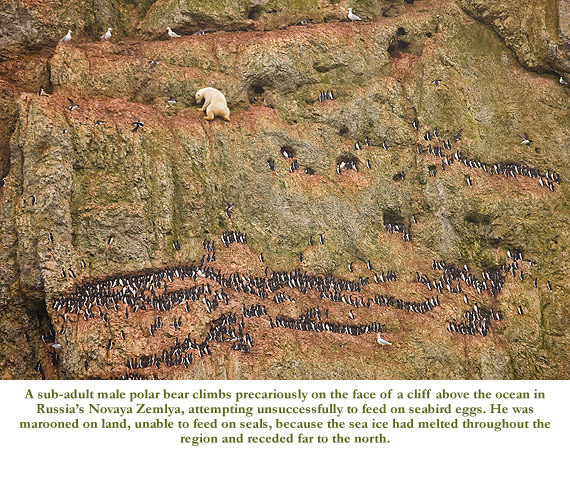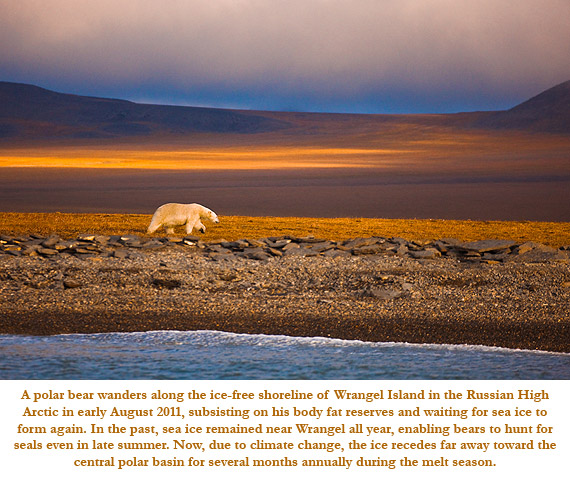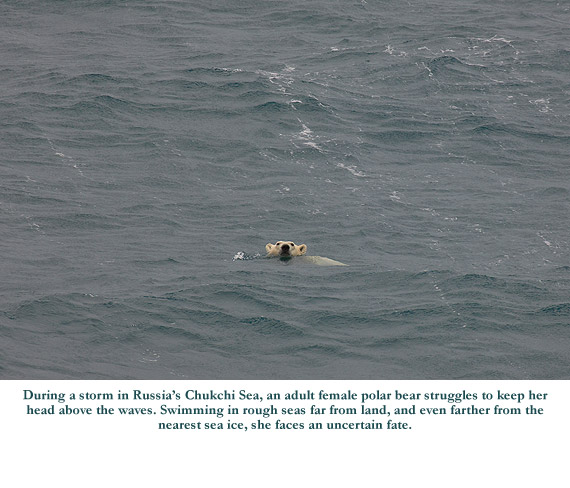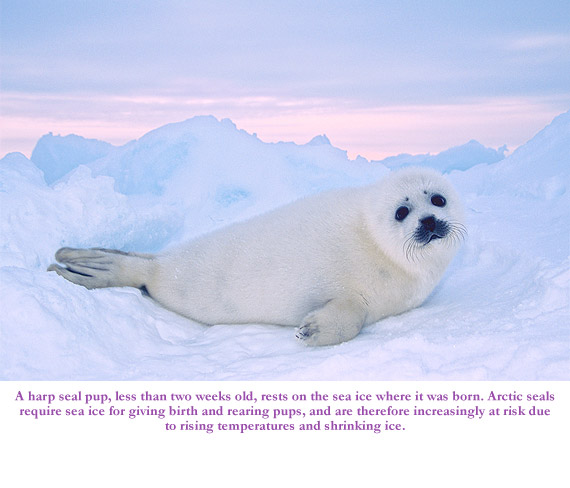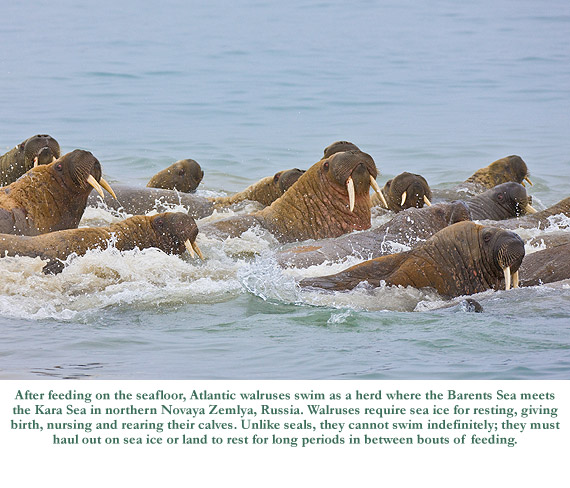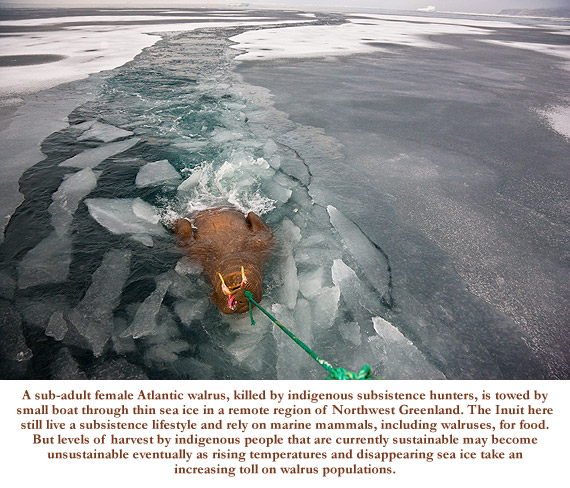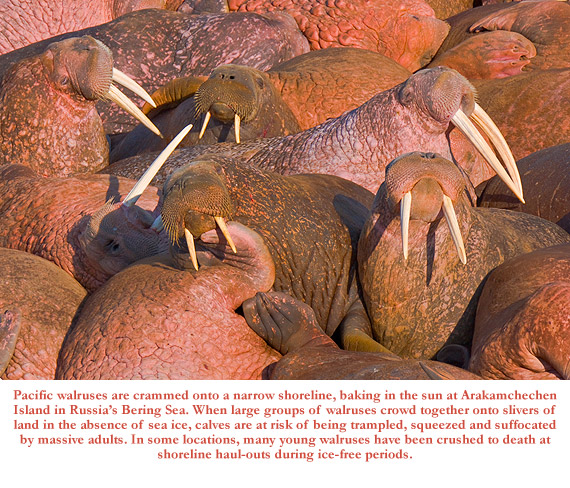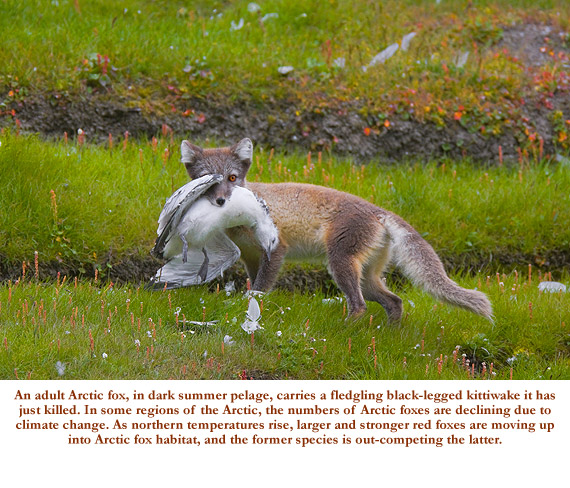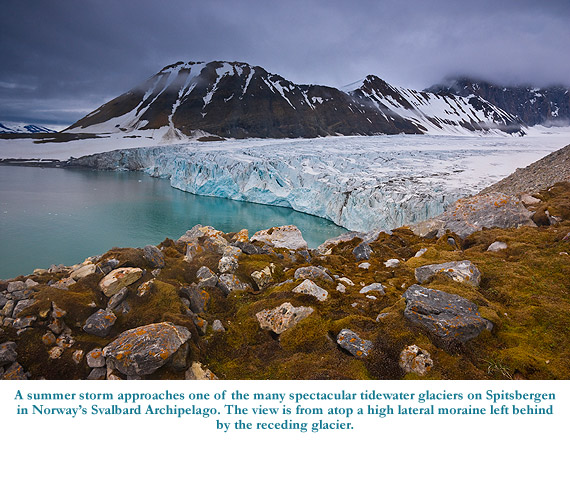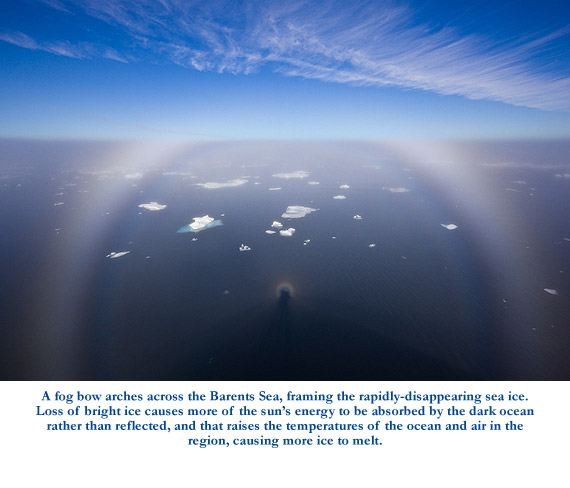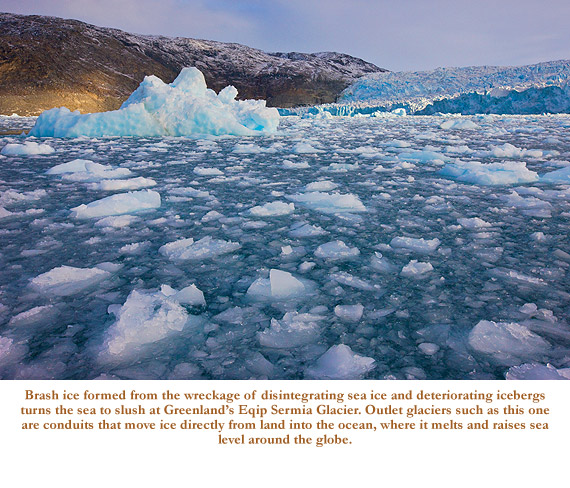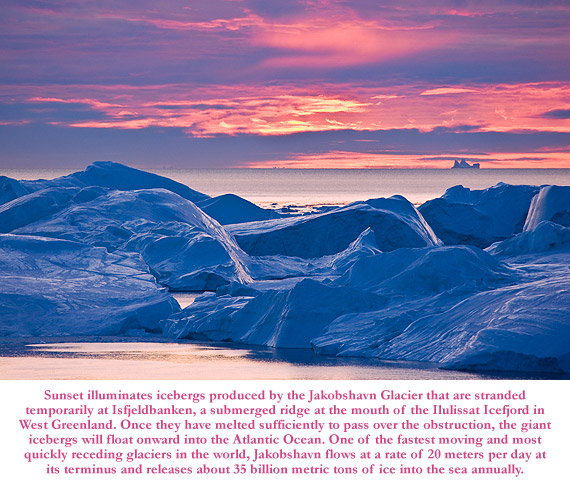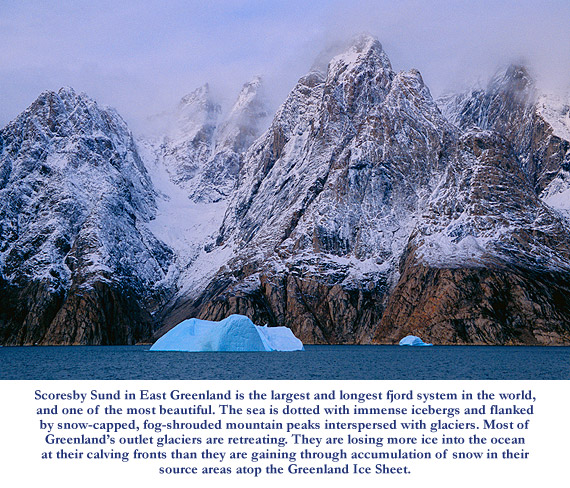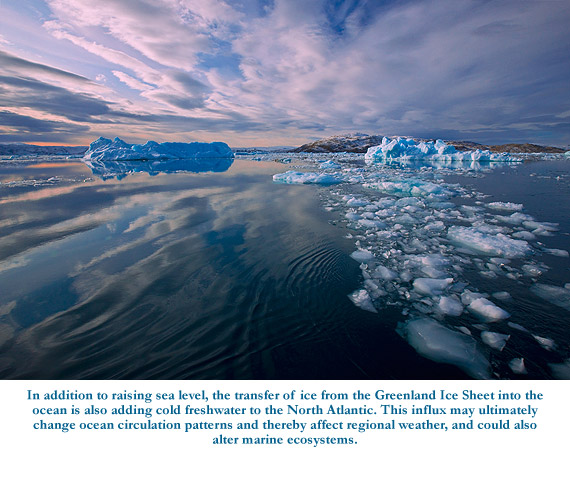Life on Thin Ice™
Human-caused atmospheric warming is fundamentally altering the climate system that supports life on Earth as we know it. Nowhere is this fact more apparent – and more globally crucial – than in the Arctic, where temperatures are heating up more rapidly than anywhere in the world. As vast expanses of Arctic sea ice melt and disappear, ice-dependent species are facing dire threats to their continued survival, and the entire planet is losing an essential air-conditioning system. In addition, the melting of the Greenland Ice Sheet is already causing sea level to rise worldwide. By the end of this century, if emissions of planet-heating pollutants continue at the current pace, this is expected to result in flooding of major coastal cities and inundation of low-lying countries. Furthermore, thawing permafrost beneath the tundra and on the arctic seafloor will ultimately release huge quantities of powerful greenhouse gases, potentially causing runaway climate warming on a scale unprecedented for tens of millions of years. The long-term consequences will be catastrophic not only for life in the Arctic but also for life across the globe.
Carbon dioxide in Earth’s atmosphere has already increased to a concentration not reached for at least 15 million years. And, the rapid rate at which we continue to pump out tens of millions of tons of heat-trapping pollutants every day is unprecedented. Before the industrial revolution, atmospheric concentration of carbon dioxide was about 280 parts per million (ppm); today it is approximately 390 ppm. During naturally induced warming periods in Earth’s past, when global average temperature gradually rose much higher than it is today, the rate of increase in atmospheric carbon dioxide was, at most, 100 ppm per every one million years, which equates to 0.0001 ppm per year. The current rate of increase is approximately 2 ppm per year – a pace 20,000 times more rapid than any rise that has ever occurred naturally.
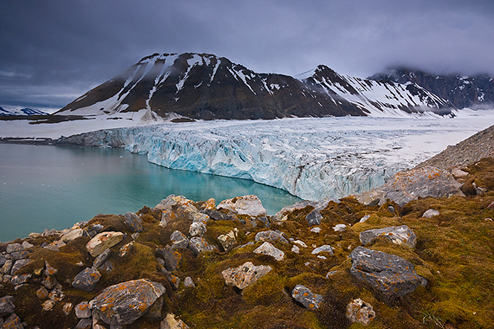
Jenny Ross |A summer storm approaches one of the many spectacular tidewater glaciers on Spitsbergen in Norway’s Svalbard Archipelago. The view is from atop a high lateral moraine left behind by the receding glacier.
During 2010, an astonishingly large increase in global human output of heat-trapping pollution occurred. We emitted about 564 million more tons of carbon compared to 2009 – an increase of 6 percent, which constitutes the largest acceleration ever recorded. If emissions continue this upward trajectory, by 2100 carbon dioxide will reach an atmospheric concentration that has not occurred on Earth since approximately 35 million years ago. During that time, temperatures in polar regions were 27° F. to 36° F. hotter than today and global temperatures averaged about 29° F. higher. No permanent sea ice existed in the Arctic Ocean and little, if any, ice existed on Greenland and Antarctica. As a consequence, sea level was about 230 feet higher than today. If those conditions were to occur again, vast regions where more than one-half the world’s human population lives would be either submerged beneath rising seas or transformed into desiccated deserts too blisteringly hot to support human life.
Ocean warming, acidification and anoxia would destroy marine ecosystems and extirpate innumerable ocean species, many of which humans depend upon for food. Extreme drought, insect infestations, diseases, wildfires, violent storms and epic floods would predominate across the globe. Forests, grasslands, wetlands and agricultural regions would be decimated. Shortages of freshwater and food would become severe and widespread. Countless species of flora and fauna would go extinct. Permafrost beneath tundra and on the arctic seafloor would thaw and release huge amounts of methane, triggering uncontrollable feedback effects and even worse climatic consequences.
Human beings evolved during an extended period of relative climate stability, and human civilization as we know it depends on that stability. The extreme climate disruption that will occur if we continue with business-as-usual emissions will inflict devastating consequences on humanity across the globe. Rapid and comprehensive reductions in greenhouse gas emissions are essential to avert this disaster. We do have the technological ability to achieve the necessary emissions control, but requisite political will is lacking. And, the general public does not comprehend that climate change poses a genuine emergency we must address now.
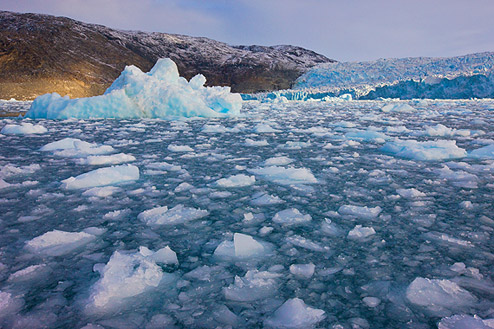
Jenny Ross |Brash ice formed from the wreckage of disintegrating sea ice and deteriorating icebergs turns the sea to slush at Greenland’s Eqip Sermia Glacier. Outlet glaciers such as this one are conduits that move ice directly from land into the ocean, where it melts and raises sea level around the globe.
An enormous gap prevails between what is known scientifically about climate change and what is understood by many non-scientists. An urgent need exists to close this gap by dramatically increasing comprehension of climate change issues by the public and policy-makers. I believe photography can play a vital role in communicating scientific issues effectively to non-scientists, in conveying the overriding significance of climate change for all life on Earth and in motivating appropriate action to address the causes and mitigate the effects of atmospheric warming.
The foregoing issues and principles form the foundation of my long-term project, Life On Thin Ice™. Leveraging the power of photography combined with science, Life On Thin Ice™ aims to communicate accurately and effectively about climate change in the Arctic, to increase public interest in the issues and comprehension of the problems, and to motivate informed action to address the growing climate crisis. The project goals are: 1.) document the Earth systems, ecosystems, species and people of the circumpolar Arctic and the increasing effects of climate change on them; 2.) educate the public and policy-makers by enhancing their understanding of the Arctic and the current problems, long-term risks and worldwide consequences of rising temperatures; and 3.) galvanize effective action to address the causes of global warming and mitigate its effects.
As I write this, polar bear mothers in the western Hudson Bay region of Canada, where the boreal forest meets the tundra, are curled-up inside terrestrial snow dens with tiny new cubs. They are nursing and nurturing their vulnerable offspring, and subsisting completely on their body fat reserves. These mother bears have not eaten since the ice broke up on Hudson Bay in early July, at which time they came ashore and began an extended period of food deprivation. Polar bears feed on seals and other blubbery marine mammals, and they cannot catch their agile and quick-swimming prey without using a sea-ice platform. Furthermore, pregnant bears do not feed while they are undergoing maternity denning. They do not eat at all from the time they enter a den during gestation until their young cubs are strong enough to leave the denning area and accompany them onto the sea ice where they can hunt again.
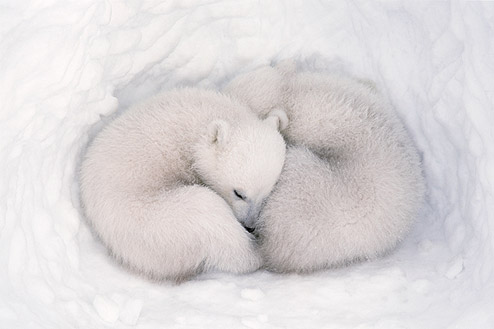
Jenny Ross |Polar bear cubs are born inside a snow den, and are tiny and helpless at birth. They remain sealed in the den with their mother for about three months, nursing and growing until they are strong enough to venture outside and accompany their mother when she resumes traveling and hunting on the sea ice.
For polar bear mothers with new cubs in western Hudson Bay, that trek from denning area to sea ice occurs late February or early March. So, by the time those bears can resume hunting seals accompanied by their young offspring, they have been completely food-deprived for about eight months. That incomparable biological feat pushes the limits of what can be endured. Yet with each passing year, the western Hudson Bay bears are being forced to push ever closer to the biological breaking point. Due to warming temperatures as a result of climate change, the ice-free season on Hudson Bay is lengthening. The sea ice is breaking up increasingly early in the summer and freezing progressively later in the fall. As a direct consequence, nutritional stress is taking a clear toll on the western Hudson Bay polar bears. They are declining rapidly in physical condition, and their population size is shrinking dramatically. If current trends continue, scientists predict that within a couple of decades very few adult females will be able to sustain pregnancy, and any cubs born are unlikely to survive.
The western Hudson Bay polar bears are the proverbial canaries in the coal mine. These magnificent creatures are likely to be the first significant population of Earth’s great mammals to be extirpated as a direct result of rising temperatures due to soaring human greenhouse gas emissions. And, polar bears in the western Hudson Bay region are not the only ones struggling to deal with worsening climate change effects. Other populations of these iconic animals are also declining, and all polar bears will ultimately be imperiled if temperatures continue to rise. Polar bear decline should be considered by everyone as a clear warning that life on Earth as we know it is at risk. Yet, most people are unaware of this warning or are misinterpreting it or are disregarding it completely. That situation must change – not only to ensure that some polar bears survive into the future but also to ensure that we preserve a livable climate on our planet for countless other species, as well as for future human generations.
If the world’s governments and citizens work together quickly and effectively toward the common goal of solving the climate crisis, we can prevent catastrophe. And, we can do more than that. We have the capacity to build a stronger and more sustainable foundation for human society. It won’t be easy, but we can do it. We must start now.
Jenny E. Ross’s Life on Thin Ice™ Slideshow

